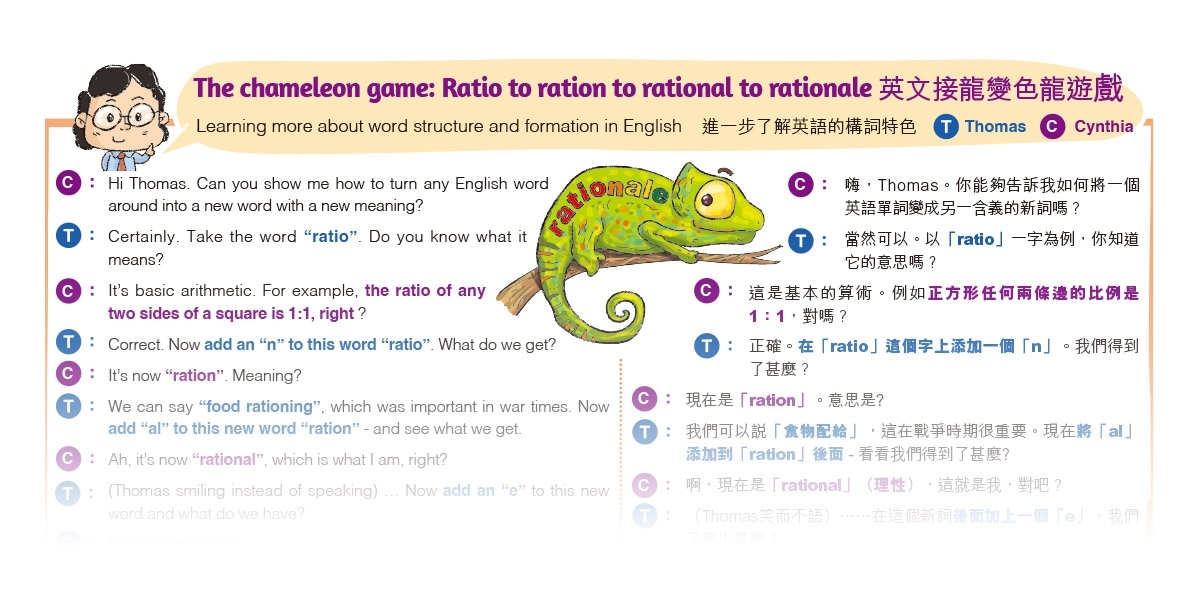
The chameleon game: Ratio to ration to rational to rationale
英文接龍變色龍遊戲
Learning more about word structure and formation in English 進一步了解英語的構詞特色
T : Thomas | C : Cynthia
C: Hi Thomas. Can you show me how to turn any English word around into a new word with a new meaning?
T: Certainly. Take the word “ratio”. Do you know what it means?
C: It’s basic arithmetic. For example, the ratio of any two sides of a square is 1:1, right ?
T: Correct. Now add an “n” to this word “ratio”. What do we get?
C: It’s now “ration”. Meaning?
T: We can say “food rationing”, which was important in war times. Now add “al” to this new word “ration” - and see what we get.
C: Ah, it’s now “rational”, which is what I am, right?
T: (Thomas smiling instead of speaking) … Now add an “e” to this new word and what do we have?
C: It’s “rationale” now.
T: We’re actually on word formation in English. All we need to do is to first of all get a word root ready, and add something to its last letter, in which case it’ll be a suffix. That way, the basic meaning will be modified or even completely changed.
C: Ah, word structure and formation isn’t that complicated as I thought… (Thomas smiling again, instead of speaking)
C: 嗨,Thomas。你能夠告訴我如何將一個英語單詞變成另一含義的新詞嗎?
T: 當然可以。以「ratio」一字為例,你知道它的意思嗎?
C: 這是基本的算術。例如正方形任何兩條邊的比例是 1:1,對嗎?
T: 正確。在「ratio」這個字上添加一個「n」。我們得到了甚麼?
C: 現在是「ration」。意思是?
T: 我們可以說「食物配給」,這在戰爭時期很重要。現在將「al」添加到「ration」後面 - 看看我們得到了甚麼?
C: 啊,現在是「rational」(理性),這就是我,對吧?
T: (Thomas笑而不語)⋯⋯在這個新詞後面加上一個「e」,我們又得出甚麼?
C: 現在是「rationale 」(理由)。
T: 我們剛觸及英語構詞。我們需要做的就是首先準備好一個詞根, 然後在其最後一個字母中添加一些字母,在這種情況下,它就是後綴。這樣,基本含義就會被修正甚至完全改變。
C: 原來英語構詞不是我想像中那麼複雜。(Thomas 再次笑而不語)






